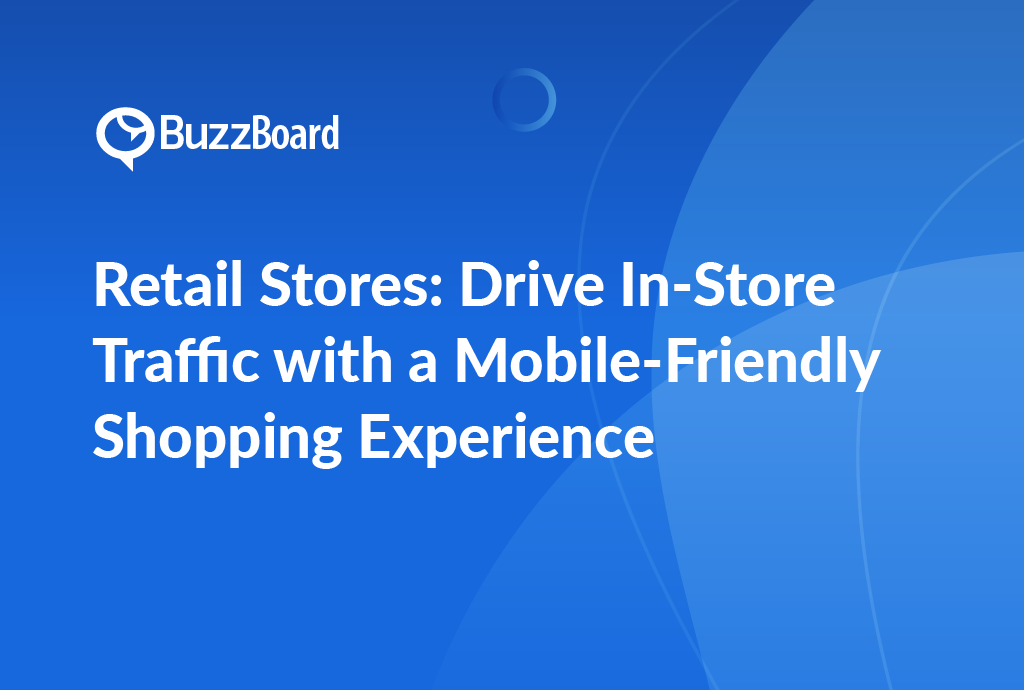Exploring the Significance of a Mobile-Friendly Website for Local Retailers
With the continued global rise in mobile use, it’s critical for salespeople in digital marketing to appreciate the importance of mobile-friendly websites for local retailers. A mobile-friendly website doesn’t just provide a superior user experience — it’s a fundamental aspect of local business marketing.
When consumers seek local products or services, they generally use their mobile devices. Failing to accommodate this mobile-first approach in website design could mean losing potential local customers. A well-designed local site can enhance online visibility, transform mobile traffic into actual store visits, and ultimately increase revenue.
Research by BrightLocal reveals that 77% of individuals use mobile devices for navigation, shopping, and finding local businesses. This data highlights the necessity of mobile-friendly websites for local retailers since they provide the flexibility and convenience sought by on-demand consumers.
Featuring easy navigation, legible text, fast page speeds, and clickable buttons, a mobile-friendly website can potentially outperform even significant competitors on the Search Engine Results Page (SERP). Employing local SEO strategies can also assist smaller businesses in reaching potential customers within a particular geographical area.
In summary, a mobile-friendly website should be the foundation of a local retailer’s digital marketing plan. As salespeople, emphasizing the value of mobile-responsive experiences to your clients can lead to enhanced customer satisfaction and repeated business.
Call-to-Action: Learn more about how to create mobile-friendly websites and how they aid in local business marketing.
Analyzing How Website Design Impacts In-Store Traffic for Retail Stores
Understanding the relationship between website design and in-store traffic is paramount for businesses, especially local retailers. Particularly, websites for local businesses can significantly sway consumers’ shopping habits, potentially increasing store foot traffic.
Adopting a user-centric website design with a straightforward, intuitive interface can boost local business marketing. Potential customers are more apt to visit your brick-and-mortar store if their online shopping experience is engaging and seamless. Retailers that provide comprehensive product information, a user-friendly navigation system, and real-time item availability increase their chance of converting online site visitors into in-store customers.
In addition, local websites should be mobile-responsive to accommodate the substantial population of smartphone users. According to Statista, the number of smartphone users is predicted to reach approximately 4.3 billion in 2023. An effective and accessible mobile website lets potential customers easily learn about the business and its offerings, which could incentivize them to visit the physical store.
Furthermore, incorporating store locators, directions and operational hours on your website can simplify plan-making for potential customers, which, in turn, could boost in-store visits.
Understanding and integrating these insights into your website design is critical for maximizing results in local business marketing.
The Role of a Mobile-Friendly Website in Local Business Marketing
The role of a mobile-friendly website in local business marketing is indispensable in today’s increasingly mobile digital landscape. As consumer mobility rises, websites for local retailers must evolve to cater to a rapidly expanding mobile user base. Google’s percentage of searches executed on mobile devices now significantly outpaces those completed on PCs, placing a greater emphasis on local websites that are optimized for mobile viewing.
Successful local business marketing hinges on a well-designed, mobile-friendly website, voice-activated Local SEO, and the ability to offer seamless experiences regardless of the device. Without optimization for mobile use, local retailer websites risk forgoing potential opportunities to convert mobile visitors into customers.
Furthermore, Google now prioritizes mobile-friendly sites in their search results. So, if you want your local websites to reach your target audience, investing in mobile-friendly website design is not optional, it’s essential.
Addressing the informational needs of users is also a critical factor in the conversion race. Value-packed, engaging content within an intuitive user interface not only maintains users’ attention but also propels them down the conversion funnel.
To learn more about enhancing local business marketing with mobile-friendly websites, click here. Our tailored strategies will create significant impacts in your local market.
Keep an eye out for our forthcoming blog post on “”10 Quick Tips for Optimizing Your Mobile Website””. Continually delve into key trends and insights in the local business marketing landscape. Follow our blog to stay informed.
Examples of Local Retailers Who Have Successfully Boosted In-Store Traffic Through a Mobile-Friendly Website
Numerous local retailers have successfully utilized mobile-friendly websites to boost foot traffic. Knowledge of these strategies can give valuable insights to salespeople at digital marketing agencies.
Starbucks is a prime example. The coffeehouse chain revolutionized its local business marketing by creating a mobile-friendly website, supplemented with an advanced mobile app. This strategy not only increased its online visibility among local businesses but also cultivated customer loyalty through personalized deals and products.
Walmart, another significant player, embraced online innovation by revamping its website to become more responsive and user-friendly across mobile platforms. This change allowed customers to easily find their nearest store among other features, thus driving in-store traffic.
However, creating a mobile-friendly website for local retailers is a complex endeavor. It includes tasks such as responsive website design, search engine optimization, and effective use of social media platforms. To delve deeper into how your agency can facilitate a local retailer’s successful transition to online platforms, check out this guide today.
Stay tuned to our blog for more insights on improving your agency’s sales techniques. Continuously check in for new updates, and feel free to leave your comments below.
Challenges and Advantages of Implementing a Mobile-Friendly Website for Retail Stores
As industry professionals, we recognize that the landscape of local business marketing is in a state of constant flux and is increasingly interwoven with digital practices, such as the development of websites for local retailers. The creation of mobile-friendly websites for retail stores presents a unique set of challenges and benefits.
One of the significant hurdles local retailers encounter when transitioning to digital is the increase in competition and high costs associated with website design. In a world where global giants are just a click away, local businesses must offer something unique to keep customers engaged.
However, there are numerous advantages. Going digital allows retailers to stay up-to-date and relevant in a rapidly changing world. Furthermore, mobile-friendly websites provide local businesses with the potential for a broader reach. As mobile usage continues to rise, a mobile website can make a local store accessible to any customer globally, even those not in close geographical proximity.
With a well-structured local business marketing strategy, these websites can guarantee a steady flow of business. The incorporation of location-based services can also deliver personalized experiences to customers based on their distance from the store, thereby enhancing customer satisfaction and engagement.
Salespeople at digital marketing agencies need to effectively communicate these advantages and disadvantages to their small and local business clients, providing solutions that mitigate the challenges while capitalizing on the benefits.
Whether you’re a seasoned veteran or a newcomer in the field, stay connected with our blog to stay abreast of modern customer behaviors and industry trends. As your partners on this journey, our goal is to provide the accurate, timely information you need to empower your clients. Dive deeper into the art of creating effective websites for local retailers by examining our previous piece.
For more tips, guides and best industry practices, sign up for our newsletter. Ensure that you’re equipped with essential insights to guide your local retail clients on the right path in digital marketing.









